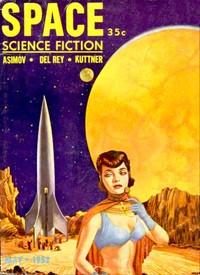Read this ebook for free! No credit card needed, absolutely nothing to pay.
Words: 97484 in 20 pages
This is an ebook sharing website. You can read the uploaded ebooks for free here. No credit cards needed, nothing to pay. If you want to own a digital copy of the ebook, or want to read offline with your favorite ebook-reader, then you can choose to buy and download the ebook.


: Solaris Farm: A Story of the Twentieth Century by Edson Milan C - Utopias; Cooperation; Agriculture Cooperative
n body is a collection of co-operative cells, more or less intelligent and responsive, therefore an important part of the thinking machine which is acted upon by the superior mind of the brain. The superior mind is in turn reacted upon by the automatic metabolism set up in the cells. Automatic metabolism of the cell, is its ability to carry on within itself the various processes of life that may be necessary to best fit it for the performance of special functions, as a particular part of the co-operative body. Violent emotions of anger, hate, despair and grief, are katabolic, poisonous and harmful; they tear down and destroy life. The poisonous deposits left in the cells by these emotions are called 'katastates.' Laughter and merriment, with all the emotions of pleasure, adoration, worship, love, affection, hope, beauty, etc., are 'anabolic,' or life-preserving. The vital, health-giving deposits left in the cells by these emotions are called 'anastates.' Nature accomplishes her perfect work by beautiful methods. The cells are fed and sustained by the circulation of the blood; they are reached from the smaller branching arteries by a network of minute, thread-like channels, sometimes called 'arterioles.' These arterioles are accompanied by the equally fine wires of the nervous system, closely connected with the brain centers. These wires are electrified by the emotions; they expand the arterioles, and the cells are flooded with an unusual supply of blood; thus they are correspondingly vitalized or poisoned, according to the kind of the dominant emotion, its duration and its intensity."
From the foregoing we readily perceive that the joyful emotions stirred by that poetical trinity, the melody, the rythm and motion of dancing, arouses the circulation so potently that every cell in the body tingles with its superabundance of vitality; both the heart and the brain respond to the invigorating tide, while its precious freight of anastates is vivifying and thrilling every cell. These happifying emotions soon become permanently dominant, the depressing emotions grow weaker, fade away and disappear. The individual is vitalized and rejuvenated! We begin to understand that when properly indulged in, dancing is the most fascinating, healthful and helpful of all the amusements. The Solaris Farm people were both fascinated and benefited by the dancing exercises so generously provided by the club; the growing interest and enthusiasm aroused was a matter of astonishment even to themselves. With the continuation of the club dances, the intensity of the enjoyment and the capacity for it, seemed to increase; this, together with the pleasing memories of bygone dances, seemed to bind them yet more closely to the destinies of Solaris Farm. Strong, straight, lithe figures, happy faces, and eyes shining with the fires of perfect health, gave testimony to the efficacy of music and motion as applied to physical development. With grateful hearts, these happy people realized that this pure font of happiness came to them as the result of unselfish, harmonious co-operation.
The effect on Gilbert Gerrish of this universal spirit of gaiety, was as marked as it was beneficial. On the raised platform at the head of the dancing hall, violin in hand, and surrounded by a chosen few of his friends in the musical club, he seemed to grow in stature as he breathed in the pervading merriment; living a new life, in which his deformity no longer marred his pleasure. Through the association of many months he had grown accustomed to the personal magnetism of the farm people. They were very proud of him and of his many brilliant accomplishments. This all-pervading sentiment of loving pride came to him as a benediction, which his refined, sensitive nature graciously absorbed. His shyness and reticence disappeared; his face glowed with the flush of happiness; his beautiful eyes shone with the fires of a new inspiration. With the hand of a master he swept the strings with a bow of magic; new strains of sweet, thrilling music stirred the dancers and moved them as one mass to the throbbing rythm of the intoxicating melody: a melody so charming that none could resist. Filled with the power of a new grace and dignity at such moments, Gilbert Gerrish felt a keen triumph in his ability to stir the emotional natures of these people whom he loved; to inspire them to better deeds and to nobler lives. They, in turn, recognized and paid willing homage to a noble soul, a great genius, whose power to sway and control them was not in the least deflected or dimmed by a thought of his deformed body. Under the mystic spell of divine music, which appeals to the highest aspirations of the human heart; which calls forth the hidden forces of the soul: they came in such perfect rapport with him in his inner life, that they sensed with soulful eyes the strong, radiant, symmetrical spirit shining through the defects and barriers of a fleshly prison. Thus transfigured, they saw him, not as he appeared to ordinary mortals, but as he really was. To these people of Solaris, this transfiguration was lasting. Very soon they came to regard him as a talisman of good fortune--the mascot of the farm.
As time passed, the inventive genius of the club members began to crop out in the repair shop, where they not infrequently, and sometimes much to their surprise, found themselves able to construct better and cheaper instruments, lenses and attachments than they were able to buy. With these improvements they soon achieved success in color photography. Later this led to making magnificently colored slides for stereopticon, kinetescope and biograph exhibits, which soon attracted wide attention and were in such demand that a large trade resulted. In this way another exceedingly profitable allied industry was added to the now famous Solaris Farm.
FENWICK HALL.
In the infancy of this Republic, when its government was looking about for a permanent home, Gen. Washington was moved to found and lay out the City of Washington as its Capitol. With a marvelous prescience he foresaw the coming needs and future greatness of the newly-united states. Impressed with visions of the glorious destiny awaiting his beloved people, his cherished republic, he wisely concluded to provide generously for the growth of a magnificent city which, a century later, should reflect credit as the capital of a mighty nation. Careless of the gibes and sneers of many of his most intimate friends, Washington, the far-seeing statesman, the invincible soldier, deliberately planned, platted and surveyed through the wilderness of forest at that time covering the great triangular basin lying between the Heights of Columbia and the waters of the Potomac and Anacostia rivers; such a bewildering array of broad streets, wide avenues, and roomy public parks, as would be ample and suitable for a brilliant city like Paris, at least sufficient for the wants of a population of a half million. The dawn of the twentieth century saw a complete realization of General Washington's brightest hopes, a verification of his prophetic visions. The wand of progress had transformed the straggling village of "magnificent distances," into the most royally beautiful city on the continent. A city which had become the pride and delight of one hundred millions of free people, who individually felt a personal interest in the vastness, the beauty and the imposing grandeur of its magnificent public buildings, which represented the crowning loveliness of architectural design, the highest artistic expression of American genius; altogether most perfectly and fittingly adorning the unrivaled capitol city of the most progressive, powerful, and meritoriously dominant republic on the face of the planet! To this Mecca of republics, as the social and political center of the western hemisphere, came the great thinkers, scientists, artists, orators and statesmen of the world.
At the rear of the grounds, on a line with the center of the mansion, were the roomy stables. They were built of rough Seneca sandstone. Like Swiss cottages, they were made more beautiful by a profusion of richly colored slates which covered the broad, steep roof and the wide eaves. Between the mansion and the stables, on the same line, twenty-five feet distant from the former, was the pretty two story building, of the same material, devoted to the kitchen, the heating and the lighting plants. Both buildings were connected with each other and with the main building by a long colonnade of harmonious proportions; its heavy cornice, narrow, steep roof, and long double line of slender supporting pillars, were all of the same red stone. The color effects offered by the lovely contrast between the velvety green of the broad, smoothly shaven lawns and the rich reds of the Seneca stone, were simply delightful! Architecturally considered, the combined effect of the group of buildings, arcade and colonnade, was as artistic as it was excellent. Under the arcade, just inside the double arch, a broad flight of stone steps led up to the heavy oak doors opening into the wide hall on the main floor. This hall was remarkable for its unusual size; it was thirty feet wide and of a proportionate height, fifteen feet from floor to ceiling. In connection with a cross hall twenty feet in width, it served to divide the entire space on this floor--one hundred and sixty feet by ninety--into four very large rooms; the two parlors, the library, and the dining room: each one thirty feet in width by seventy feet in length, with fifteen foot ceilings.
The grand proportions of these magnificent rooms and stately halls, excited universal admiration; they impressed the beholder with a dominant idea of the spacious luxury which marked the interior appointments of Fenwick Hall. In the center of the main hall, thirty feet from the front entrance, began the flight of the grand stairway. The general design of this stairway was boldly unique. It was in harmony with the scale of magnificence which characterized the halls and parlors. In three long flights of twenty-five steps each, it rose to the fourth floor. Counting the fifteen-foot landings on the second and third floors, it was practically one structure with a generous breadth of fifteen feet. It was built of the same material--American mahogany--with casings, cornices, banisters and newels of the same pattern and finish, all highly polished and rich with ornamental carving. The beautiful color effects of the polished mahogany, were brought out more vividly by the pale neutral tint of the heavy velvet carpet, which covered the stairs and landings. As an illustration of the great space occupied by this grand stairway of such ideal proportions, each one of its seventy-five broad steps would afford a comfortable seat for eight persons--a goodly company of six hundred, all told. This royal trinity of stairways ranked as the distinguishing feature of the mansion. They gave it an air of stately elegance, tempered with the glow and warmth of a generous hospitality.
The halls on the second and third floors were counterparts of the main hall in size and style. The hall on the fourth floor was fifty feet wide by one hundred and sixty feet long. It was arranged to be used as a ball room, or for concerts, lectures, operas and theatricals. For such events, it would comfortably seat an audience of one thousand people. The roomy stage was furnished with the latest and most approved appliances; it was also equipped with a remarkable series of twelve drop curtains for the lectures. Number one of the series, was a twelve by twenty-four foot map of the United States, including Alaska, Hawaii, Porto Rico and other territorial possessions. This map was accurately drawn to a large scale, it was artistically colored and marked in such a way as to show at a glance the boundaries of original territory; the ceded territory, the date of cession, and from whom acquired; the dividing lines between states and between counties; the location of all cities and towns having a population of one thousand or over; the principal state and county roads, all railroads, lakes, rivers, mountains, public parks, valuable forests, arid lands, irrigable lands, mineral deposits; all noted mines of coal, iron, gold, silver, copper, etc., together with a great variety of important items: all of which proved exceedingly valuable as an added means by which to illustrate in an interesting and comprehensive way, lectures on geographical, geological and historical subjects, together with lectures on the natural wealth and resources of our country; its manufacturing, mining, commercial and agricultural interests, with a great number of kindred topics as well. The second curtain was uniform in size with the first and with the entire series. On the same large scale, it gave a magnificent illustration of the solar system. The background was a pale bluish gray. The sun appeared as the central figure, surrounded by the planets in their orbits, carefully drawn as to comparative size and position. The whole map was colored with exquisite taste in perfect harmony with the beautiful sky effects of the background. The skillful work of the map maker proved especially strong in furnishing a lesson of wholesome humility for the over-proud denizens of the little planet Earth who, puffed up with much vanity, have for ages proclaimed the Earth as the pivotal center of all creation. The third curtain was simply a heavy, plain white one, perfectly fitted for the display of stereopticon views, and more especially for the moving panoramic views of the kinetescope, the vitascope and the biograph, which have proved such attractive and entertaining aids to the general lecturer, dealing with any special subject capable of such profuse illustration. The remaining nine curtains were devoted to outline maps of the world, and to illustrated object-lessons in the most important and interesting departments of nature.
The side walls of this remarkable hall were wainscoted in polished hard wood, for a distance of five feet above the floor: the remaining wall space was divided into large ornamental panels, with beautifully scrolled historical borders. In these panels were painted, one in each, large maps of the States and Territories, which were drawn to uniform scale, minutely accurate, with every post office, post road, wagon road or cycle path plainly marked. In addition, at least twice the number of details usual to large maps showing counties and townships, were carefully noted. The effect of this unique educational system of ornamentation was as interesting as it was fascinating. In harmony with this idea, the entire length of the broad ceiling overhead was painted a pale blue; it was divided into two large panels with ornate borders; each panel was dotted with stars and planets in such a methodical way as to form a complete astronomical map of the visible heavens, both northern and southern hemispheres. This, with several of the large drop curtains, served as adjuncts to the well equipped observatory which was located in one of the large towers at the rear of the mansion.
On the main floor, on each side of the front hall, were the two grand parlors, whose exact dimensions have been stated heretofore. They were carpeted and furnished with all the art and luxury that skill could devise, or wealth could procure. Two wide archways of Moorish style and majestic proportions, opened from each parlor into the main hall. The chief adornments which marked these fine parlors as unapproachably superb, were two immense mirrors, alike in every way, mounted in heavy frames, rich with leaf gold. They occupied the entire wall space at the rear end of these enchanting saloons of artistic luxury. When distinguished groups of brave men and beautiful women were assembled here, the magical effect of these mirrors in reproducing the brilliant company as one magnificently framed panoramic picture, was ever the source of perpetual admiration and delight. On such occasions the thirty feet of the main hall in front of the stairway, served as the third or reception parlor. The grand stairway shone resplendent as one magnificent centerpiece of loveliness. Up the long flight on either side, it was banked by a wealth of potted flowers, ferns and palms, festooned with wreaths of lovely smilax. Just in front of this unrivaled background of beauty, standing alone upon the movable reception platform, which was merely a small circular extension of the first step of the grand stairway, the charming young hostess of Fenwick Hall, with the grace and courtesy of a born princess, gave a greeting of welcome to her delighted guests, or dismissed them with a gracious smile as they entered or retired.
The library, in the rear of the parlor at the left of the main hall and separated from it by the cross hall, was an exceedingly imposing and attractive room. With its quiet array of costly appointments, it seemed to possess some hidden charm. Its mahogany shelves were laden with a rare collection of choice books, elegantly bound, skillfully arranged and classified. The assortment of scientific books was a remarkably large one. Marble statues, and exquisitely painted portraits of a host of famous authors and artists, whose works had enriched the literature of the world, fittingly adorned this ideal realm of drowsy quiet, where both lore and luxury reigned supreme.
Free books android app tbrJar TBR JAR Read Free books online gutenberg
More posts by @FreeBooks









